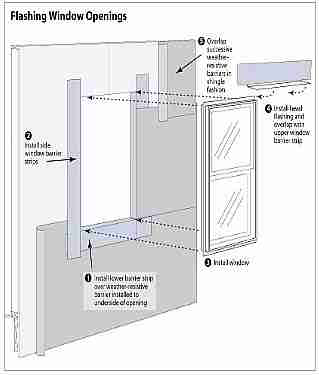
Smart Choices: Energy-Efficient Windows Installation
Investing in energy-efficient windows is a strategic decision that not only enhances your home’s aesthetics but also contributes to energy savings and environmental sustainability. From choosing the right windows to ensuring a proper installation, here’s a comprehensive guide to help you make informed decisions for a more energy-efficient and comfortable living space.
Understanding the Benefits of Energy-Efficient Windows
Energy-efficient windows offer numerous advantages, making them a popular choice among homeowners. They contribute to improved insulation, reducing heat transfer and maintaining a comfortable indoor temperature. Additionally, these windows help lower energy bills by minimizing the need for heating or cooling. The enhanced insulation also provides soundproofing benefits, creating a quieter and more serene home environment.
Choosing the Right Energy-Efficient Windows
Selecting energy-efficient windows involves considering various factors. Look for windows with low-emissivity (low-E) glass, which features a coating that reflects infrared light, reducing heat transfer. Double or triple-pane windows with gas fills between the panes enhance insulation. Consider the U-factor, which measures how well a window insulates, and the solar heat gain coefficient (SHGC) for optimal energy performance.
Different Types of Energy-Efficient Windows
Energy-efficient windows come in various types, each offering unique features. Double-hung windows are versatile and easy to clean, while casement windows provide an airtight seal when closed. Awning windows are hinged at the top, allowing for ventilation even during rain. Fixed windows are ideal for maximizing natural light without ventilation. Choose the type that suits your preferences and complements your home’s architectural style.
Proper Window Sizing and Placement
Correct sizing and placement of windows are crucial for optimal energy efficiency. Ensure that windows are appropriately sized for each room, allowing for ample natural light while preventing unnecessary heat gain or loss. Strategic placement, such as installing larger windows on the south side for passive solar heating, can enhance energy efficiency further.
Consideration for Frame Materials
Window frames play a significant role in energy efficiency. Common frame materials include wood, vinyl, aluminum, and fiberglass. Wood frames provide excellent insulation but may require more maintenance. Vinyl frames offer durability and energy efficiency with minimal upkeep. Aluminum frames are lightweight but may conduct heat, while fiberglass frames combine strength and insulation. Consider the climate and your preferences when choosing frame materials.
Installation by Professionals: Ensuring a Tight Seal
Proper installation is critical for the effectiveness of energy-efficient windows. Hiring experienced professionals ensures a tight seal, preventing air leakage and water infiltration. A proper installation also maximizes the performance of the windows and contributes to their longevity. DIY installations may risk improper sealing, reducing the windows’ energy-saving benefits.
Maximizing Natural Light: Balancing Efficiency and Illumination
While energy efficiency is a priority, it’s essential to balance it with the desire for natural light. Consider windows with high visible transmittance (VT) ratings, allowing more natural light to enter your home. Balance is key, ensuring that energy-efficient features do not compromise the well-lit and inviting atmosphere you desire.
Potential Incentives and Savings
Investing in energy-efficient windows may qualify you for various incentives and rebates. Check with local utility companies, government programs, or energy-efficiency initiatives for potential savings. Some regions offer tax credits or financial incentives to encourage homeowners to adopt energy-efficient practices, making the decision even more cost-effective.
Regular Maintenance: Preserving Efficiency
To ensure long-term energy efficiency, regular maintenance is crucial. Clean windows regularly to remove dirt and debris that may obstruct sunlight and reduce efficiency. Inspect weather stripping, seals, and frames for wear or damage, addressing any issues promptly. Well-maintained energy-efficient windows continue to deliver optimal performance and energy savings.
Conclusion: A Greener and Comfortable Home
Choosing and installing energy-efficient windows is a proactive step toward creating a more sustainable and comfortable home. From understanding the benefits to selecting the right features and ensuring proper installation, each decision contributes to energy savings and a reduced environmental footprint. Invest wisely in energy-efficient windows for a greener and more comfortable living space.
For a detailed guide on choosing and installing energy-efficient windows, visit thietbidinhvithongminh.com.
